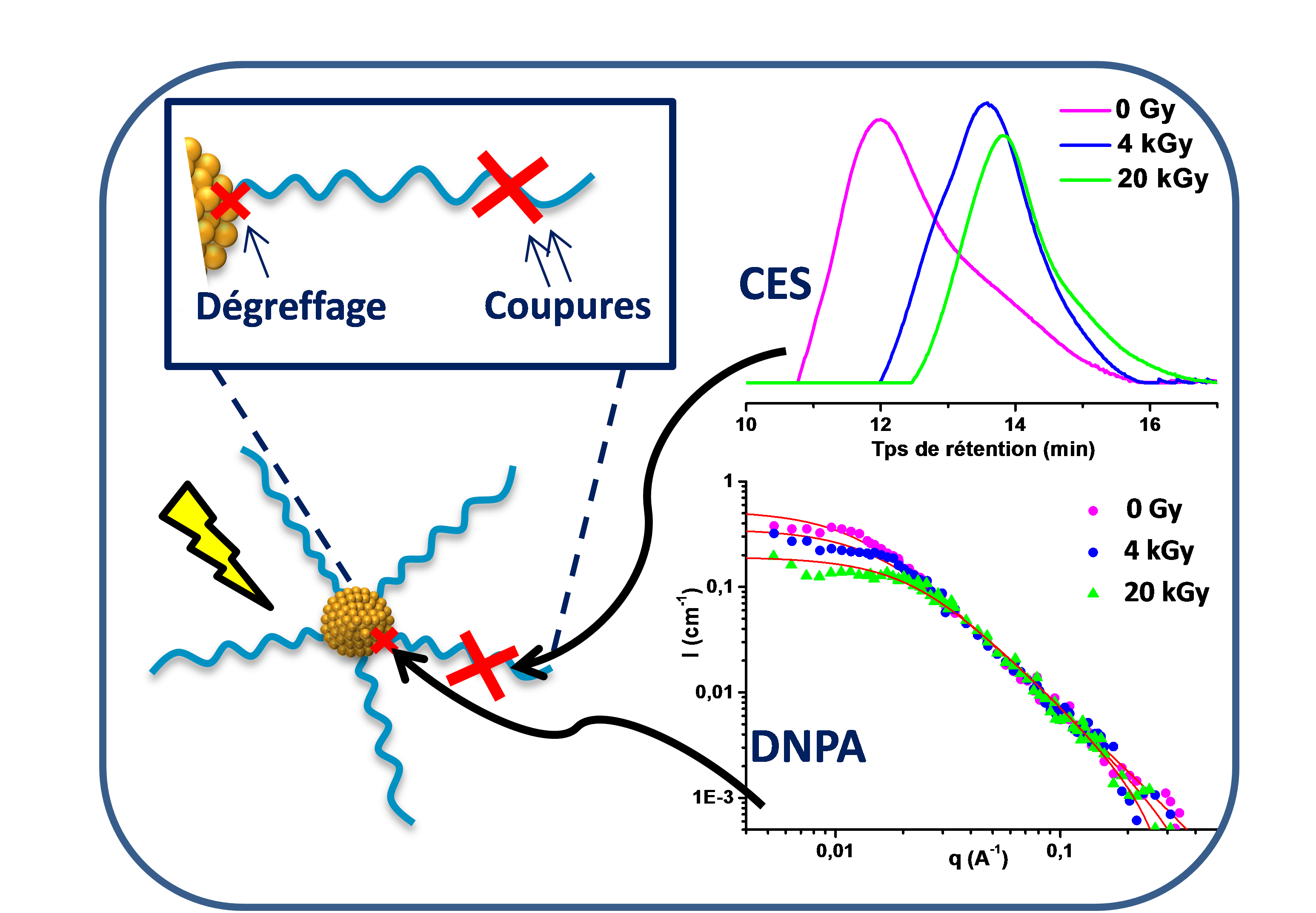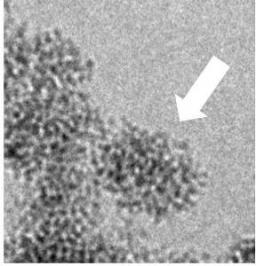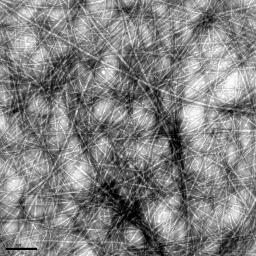2014
PhD thesis of: Hugo CASADEMONT
Contacts: Bruno JOUSSELME & Vincent DERYCKE
MoS2 Transistors with Ultrathin and Robust Organic Gate Dielectric
Dielectric films with nanometer thickness play a central role in the performances of field effect transistors (FETs). In this article, a new class of organic gate dielectric based on the electrochemical grafting of diazonium salts on metallic electrodes is investigated. The versatile diazonium salt strategy is a local and room-temperature process that provides robustness and performances. Moreover, this process produces ultrathin (4-8 nm) and smooth films. To prove their efficiency as gate dielectric, they were integrated in MoS2-FETs gate stacks. The devices display excellent switching behavior for reduced gate bias swing (down to 1V) and suppressed hysteresis thank to the highly hydrophobic nature of the fluorinated grafted film. Furthermore, the devices exhibit steep subthreshold slopes (as low as 110 mV/decade), demonstrating excellent gate coupling.
We are presently extending this study to CVD-based monolayer MoS2 and to flexible devices.
Référence :
[1] Electrografted Fluorinated Organic Ultrathin Film as Efficient Gate Dielectric in MoS2 Transistors
H. Casademont, L. Fillaud, X. Lefevre, B. Jousselme, V. Derycke, J. Phys. Chem. C (2016), in press - link
Dans le cadre de la thèse de: Aurélie Paquirissamy
Contacts: Géraldine Carrot (Nimbe/LICSEN) & Jean-Philippe Renault (Nimbe/LIONS)
Nano-objets polymères et hybrides sous irradiation
Les nano-objets polymères ou hybrides sont utilisés sous irradiation dans de nombreux domaines : lithographie, radiostérilisation, radiosensibilisation. Cependant, il existe peu d’études sur l’interaction de ces objets nanométriques avec les rayonnements. Dans le présent travail, nous avons développé deux familles de nano-objets afin d’étudier leurs comportements sous irradiation. La première est à base de copolymères à blocs à la fois hydrophiles et hydrophobes, pouvant s’auto-organiser dans l’eau (micelles, vésicules). Les objets à base de polyéthylène glycol (PEG) varient de par la nature de leur polymère hydrophobe (polyméthacrylate, polysulfone) et leur sensibilité aux rayonnements ionisants. Les nanoparticules métalliques étant connues pour augmenter l’effet de l’irradiation, nous avons également synthétisé des nanoparticules d’or greffées de chaînes polymères. Après irradiation dans l’eau, on observe une diminution de la taille de ces objets qui s’explique à la fois par des coupures en bout de chaînes (analyses par chromatographie d’exclusion stérique - CES) et par du dégreffage de chaînes polymères sur la nanoparticule (mesures par diffusion de neutrons aux petits angles – DNPA, effectuées au LLB). En présence de cellules cancéreuses, ces nanoparticules d’or greffées ont montré leur efficacité en termes de radiosensibilisation. Lorsqu’un médicament anticancéreux comme la doxorubicine est greffé sur les chaînes polymères, l’activité biologique est conservée après couplage et irradiation. A long terme, on peut donc envisager de combiner activité radiosensibilisante et transport de molécules chimiothérapeutiques dans le même nano-objet.

Les analyses par chromatographie d’exclusion stérique (en haut à droite) montrent, en fonction de la dose d’irradiation, un déplacement du signal vers les temps de rétention plus long, correspondant à des masses molaires plus faibles des chaînes dégreffées. En DNPA, la diminution de l’intensité du signal à q=0 (en bas à droite) montre une baisse de la masse totale des objets.
Understanding the formation of nanoparticles in water at room temperature is a major challenge, both to tackle the mechanisms of mineral growth in biological systems, and to synthesise efficiently nanomaterials. However, the growth mechanisms usually invoked sometimes fail dramatically to describe reality, especially the final size, the crystalline quality and rate of production of the nanocrystals. Progress in this area are slow because of the great difficulty in observing the intermediate steps between the solution before reaction, and the construction of the first nanocrystal. A group of researchers from the IRAMIS/NIMBE, the Laboratory of Condensed Matter Physics at the École Polytechnique and the Université Pierre-et-Marie-Curie has managed this feat by using in particular the SOLEIL synchrotron radiation. Their observations allowed to propose a formation scenario which is unusual, but consistent with reality, and probably very generic. These results have been recently published in ACS Nano.
Since the beginning of the years 2000, more and more examples of functional amyloid fibers have been discovered in bacteria and fungi as well as in the mammals’ realm[1-2]. Very recently, a study on about forty peptide hormones has demonstrated that those were stored inside pituitary secretory granules under the form of amyloid fibers[3].
Beyond the structural biology question, we are especially interested in these molecules because we think they might be appropriate models to tackle broader issues like biomimetic self-assembly and amyloid formation – amyloid understood as “beta-sheet rich assembly”.
Indeed, peptides are generally small and easily synthesizable molecules that, if our hypothesis is right, will form reversible amyloid-like assemblies whose structure and assembly mechanism will be carefully studied.














